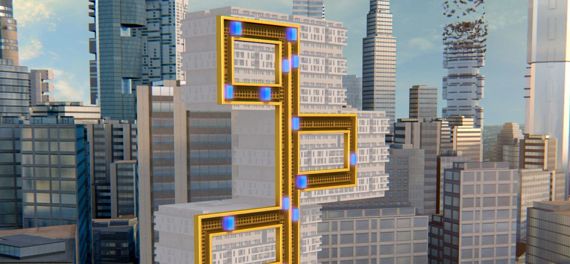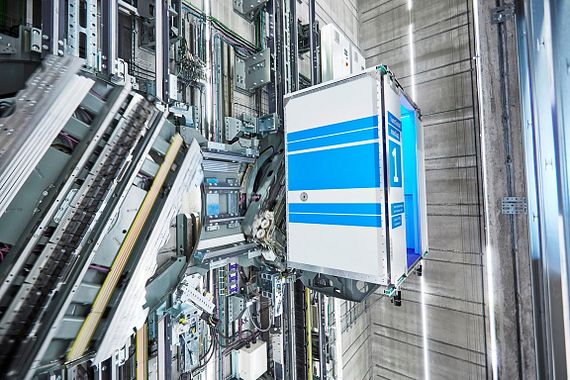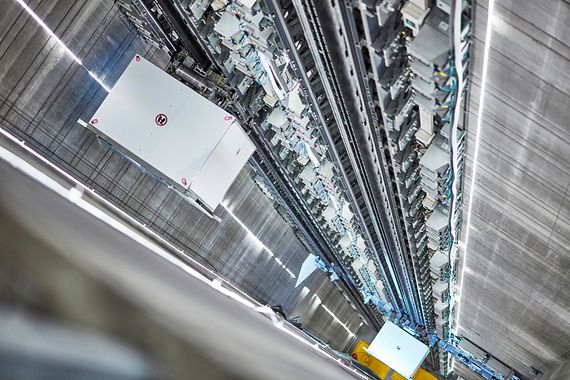Fast delivery in spite of complex geometries: special sliders in rope-free lift
- What was needed: Special plain bearings for the linear drive
- Manufacturing method: Laser sintering
- Requirements: Fast delivery, self-lubricating product
- Material: iglidur® i3
- Industry: building technology
- Success through collaboration: Fast delivery despite complex structure and outstanding sliding properties for linear guidance
3D printing with wear-resistant polymers

Problem
Due to the complicated structure and the need for delivery at short notice, TKE decided to have the necessary linear bearings made with additive manufacturing. A material was needed that could meet the high requirements of reliability and guiding characteristics for the linear drive.Solution
The laser-sintered special sliders made of iglidur I3 were quickly printed and shipped. The high-performance iglidur I3 polymer is characterised by excellent mechanical properties and high strength. Thanks to the incorporated solid lubricants, the components made of iglidur I3 do not need any additional lubrication. This makes them especially wear-resistant and durable.The linear drive moves lift cabins vertically, horizontally and even at a slanted angle
Thyssenkrupp is one of the most progressive companies in the area of lift technologies and services. 160 years after launching its first lift, the company is breaking new ground in the area of lift technology - with the MULTI rope-free lift system.In the MULTI, several cabins travel upwards in one shaft and downwards in another in a continuous loop – comparable with a vertical circular rail track system. With a speed of 6m/s, this system enables almost constant access to a lift cabin every 15 to 30 seconds. Thanks to the innovative changeover system of the MULTI, the linear drive and the guide rod can rotate 90°. How does it work? It uses linear motor technology, which was once developed for the Transrapid magnetic levitation train system. This revolutionary drive moves lift cabins vertically, horizontally and even at a slanted angle.

Printed linear sliders made of iglidur I3 - reliable in use in the lift guidance system
The rope-free lift is being tested in the 246-metre high testing tower of Thyssenkrupp in Rottweil, where the company's German research and development centre is also located.Communication between and to the cabins takes place via antennas. The antennas used for communication are guided on a rail. They are guided by linear sliders, which are printed by igus and made of the self-lubricating SLS polymer iglidur I3.
iglidur I3 is the most frequently used polymer for printing abrasion-resistant special parts - its convincing attributes include exceptional strength and outstanding mechanical properties. The laser sintering powder can be purchased to make one's own parts or used for printed parts ordered from the igus 3D printing service.
Further information on iglidur I3 can be found in the shop

Other application examples for 3D printed components can be found here:
All customer applications at a glance